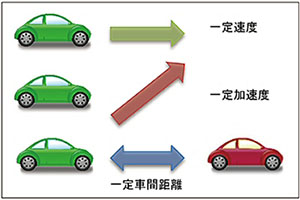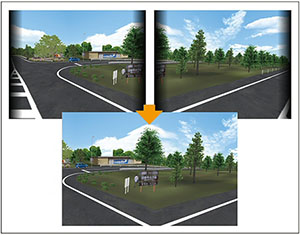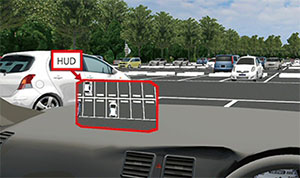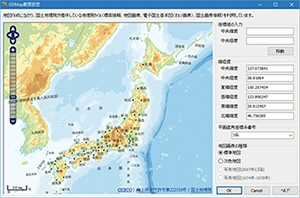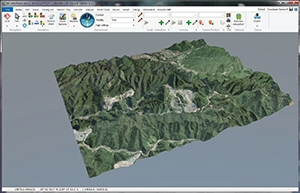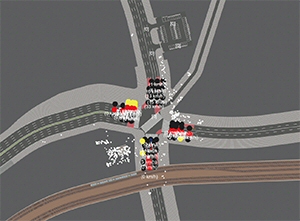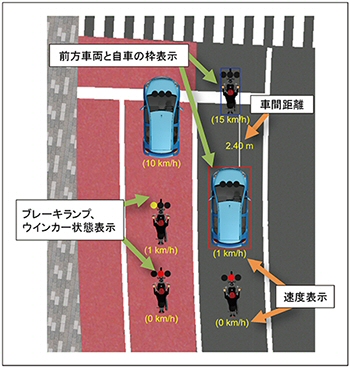Generally, on Windows 64 bit OS, WOW64 (Windows on Windows64) that plays the role of virtual 32 bit OS is activated in 64 bit address space and operated in 32 bit address space in order to operate 32 bit App directly. Memory usage of 32 bit App is limited to 4GB.
This 64 bit support utilizes full PC resources. Over 4GB memory is available, and speed is expected to be increased because there is no intermediate intervention like WOW64.
Features enhanced by UC-win/Road
Various benefits can be expected by 64-bit conversion. Typical examples are shown below.
1. Expansion of terrain space and improvement of resolving performance
Simulation of long distance roads on a vast terrain can be performed by expansion of terrain mesh size. For example, previous 20km x 20km terrain space with the standard Japan map can be expanded to 400km x 200km. This expansion and finer mesh settings will describe more realistic terrain.
 |
2. Expansion of the number of arranged models
Many model geometry information can also be arranged without worrying about the 4GB limit. Especially, it is effective when to simulate urban space, and buildings can be displayed smoothly though they are modeled individually.
3. High qualified texture
The limit amount of available textures such as ground surface, road surface, and model is greatly increased, and multihued description will be possible. For example, landscape can be created naturally and a sense of immersion will be improved by expanding the spacing of road texture repeating pattern, and increasing sections and altering road texture.
4. Visualization of analysis result
A lot of memory is required to visualize analysis results including animation steps such as tsunami, flooding, wind, or noise. It will be possible to perform a long-haul visualization simulation that was difficult until now.
Future enhancements associated with 64bit support
We will introduce plug-ins that will be enhanced with 64bit support.
Spatial numerical accuracy
When describing value on a computer, the accuracy depends on the type of register that stores real number. There are a single precision and a double precision. The former has 7-digit accuracy and consumes 4 bites per data, and the latter has 15-digit accuracy and consumes double capacity. UC-win/Road uses the single precision to gives priority to memory usage efficiency, but it will replaced with the double precision because memory limit will be virtually lost by 64 bit support. This improves the reliability of mutual conversion between latitude or longitude and orthogonal coordinates. In a driving simulation, smooth change in direction can be described by using the double precision for vector in camera direction and calculation of precise panning, tilting, and rolling when calculating the direction of travel from subtle steering operation.
Point cloud modeling plug-in
An abolishment of the limit of the number of point cloud up to 70 million makes it possible to load 500 million points. It supports an editing function and provides a meshing function by a partial deletion and point cloud analysis.
Tsunami plug-in
This plug-in loads analysis results of flow velocity and makes its direction into anime with vector. A high speed animation can be created by OpenGL shader.
